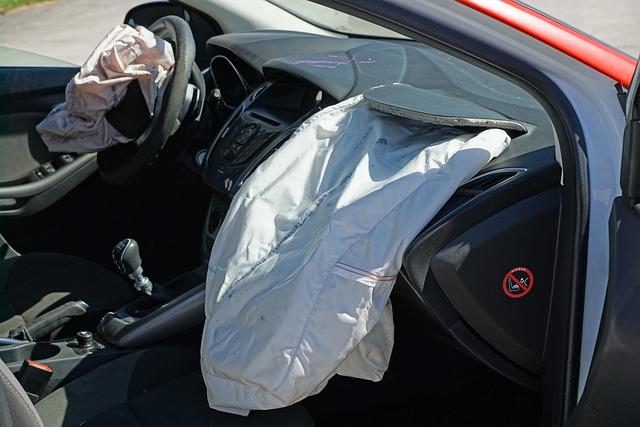Navigating the world of auto insurance can be a challenge for any driver, but it becomes even more complex for those labeled as high-risk. Whether it’s due to a history of accidents, traffic violations, or other factors, securing the right coverage without breaking the bank requires knowledge and strategy. In this article, we’ll explore essential auto insurance tips tailored specifically for high-risk drivers, helping you understand your options, improve your rates, and maintain the protection you need on the road. If you’re facing higher premiums or feeling uncertain about your coverage, read on to discover practical advice that can make a difference.
Table of Contents
- Understanding High-Risk Driver Classifications and Their Impact on Auto Insurance
- Strategies to Lower Premiums Despite High-Risk Status
- Essential Coverage Options Tailored for High-Risk Drivers
- Tips for Building a Positive Driving Record to Improve Insurance Rates
- The Way Forward
Understanding High-Risk Driver Classifications and Their Impact on Auto Insurance
High-risk drivers are individuals whom insurers consider more likely to file claims based on certain factors. These can include a history of accidents, multiple traffic violations, a recent DUI conviction, or even limited driving experience. Insurance companies use these classifications to assess the potential cost of insuring a driver, often resulting in higher premiums or restricted coverage options. Understanding which behaviors or driving records contribute to being labeled high-risk is essential for managing expectations and taking proactive steps toward improving one’s insurance standing.
Insurance providers tend to classify high-risk drivers based on a combination of:
- Driving record history – including accidents and tickets
- Age and experience – young or inexperienced drivers
- Credit scores – in some states, credit affects rates
- Vehicle type – certain cars may be considered more risky
- Legal infractions – DUIs or serious traffic violations
Recognizing these factors empowers drivers to work toward safer habits and improved documentation, which may eventually lead to reclassification and more affordable coverage.
Strategies to Lower Premiums Despite High-Risk Status
While being labeled high-risk can feel daunting, there are proactive steps you can take to ease the financial burden of your premiums. Start by shopping around and comparing quotes from multiple insurers, as rates and policies can vary widely. Consider opting for a higher deductible if you have the financial cushion to cover potential out-of-pocket costs in the event of a claim; this often lowers your monthly payments. Additionally, enrolling in usage-based insurance programs or telematics plans that monitor safe driving behavior can demonstrate responsibility and lead to discounts.
Beyond pricing strategies, focusing on improving your overall driving profile is key. Taking a defensive driving course not only refreshes your knowledge of road safety but frequently qualifies you for insurance discounts. Maintain a clean driving record moving forward to gradually reduce your risk classification. Bundling your auto insurance with other policies like home or renter’s insurance can also unlock savings. Lastly, inquire about any available loyalty or good payer discounts—showing consistency in payments may positively influence your renewal rates.
Essential Coverage Options Tailored for High-Risk Drivers
Navigating insurance options can be challenging if you’re categorized as a high-risk driver, but several tailored coverage choices can help mitigate potential expenses while keeping you protected. Liability coverage is a must-have, offering financial protection if you’re at fault in an accident involving injuries or property damage. Many insurers also suggest considering uninsured/underinsured motorist coverage, especially since high-risk drivers might encounter other drivers with inadequate insurance, thereby reducing your financial exposure after an accident. Lastly, collision and comprehensive coverage safeguard your vehicle against damage from accidents, theft, or natural disasters, which can be particularly valuable for those with a history of claims or incidents.
Additionally, it’s wise to explore endorsements and discounts designed with high-risk drivers in mind. Some insurers offer accident forgiveness, which prevents your first accident from impacting your premium. Others provide safe driver discounts after a defined period of claim-free driving, allowing you to gradually rebuild your insurance profile. When comparing policies, be sure to ask about:
- Flexible payment plans tailored for tighter budgets
- Usage-based insurance programs that reward responsible driving
- Driver education discounts for completing defensive driving courses
These options can not only make insurance more affordable but also encourage safer driving habits, ultimately helping to lower premiums over time.
Tips for Building a Positive Driving Record to Improve Insurance Rates
Establishing a clean driving history is essential for reducing insurance premiums over time. One effective strategy is to consistently observe traffic laws, including speed limits and stop signs, to minimize the risk of violations. Additionally, taking defensive driving courses not only sharpens your skills but often qualifies you for discounts with many insurers. Keep a close eye on your vehicle’s maintenance—well-maintained brakes, tires, and lights contribute to safer driving and prevent accidents caused by mechanical failures.
Key habits that contribute to a positive driving record include:
- Avoiding distractions like mobile phones while driving
- Maintaining a safe following distance to reduce collision risks
- Regularly reviewing your driving record to dispute any inaccuracies
- Choosing routes with lower traffic congestion to decrease stress and chances of incidents
By consciously cultivating these habits, high-risk drivers can demonstrate responsibility and reliability to insurance companies, potentially unlocking improved rates and better coverage options.
The Way Forward
Navigating the world of auto insurance as a high-risk driver can be challenging, but it’s far from impossible. By understanding the factors that influence your premium, actively working to improve your driving habits, and exploring all available options, you can find coverage that fits both your needs and your budget. Remember, being proactive and informed is your best strategy for turning the odds in your favor. Stay safe on the road, and keep these tips in mind to make auto insurance work for you—even when you’re labeled high-risk.





